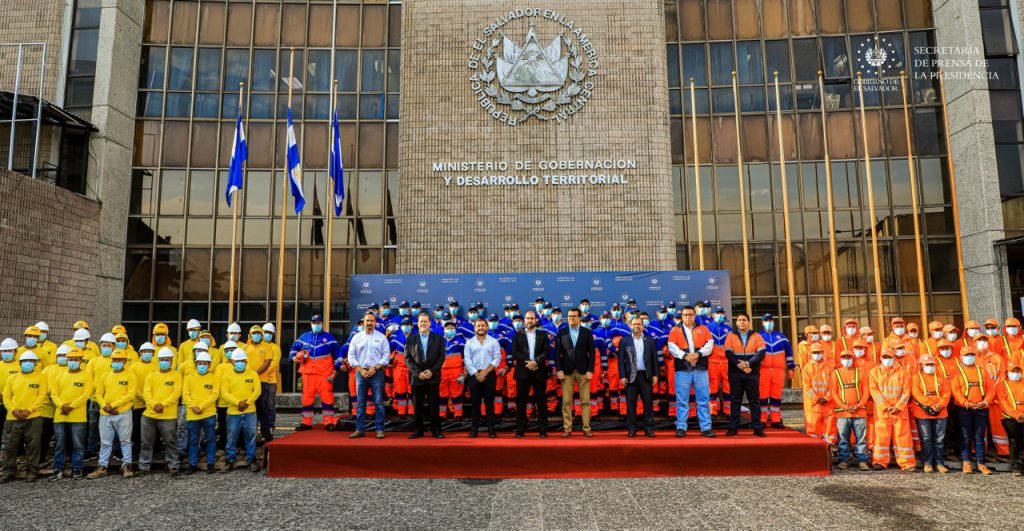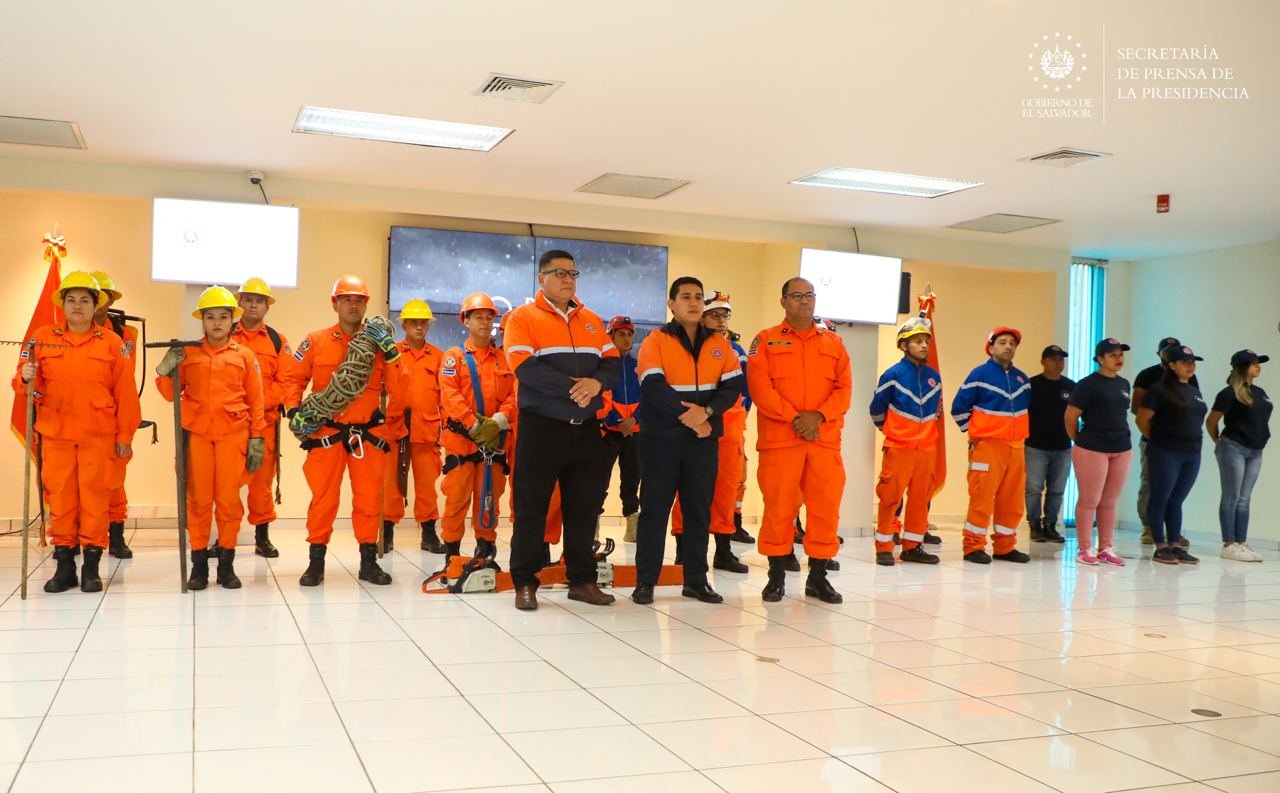Gov
Sistema Nacional de Protección Civil de El Salvador: Ensuring Disaster Preparedness
Published
2 years agoon
By
Jack
Sistema Nacional de Protección Civil de El Salvador: Disasters can strike at any time, leaving devastation and destruction in their wake. In order to effectively respond and mitigate the impacts of disasters, countries around the world have implemented systems and mechanisms to ensure disaster preparedness. One such system is the Sistema Nacional de Protección Civil (National Civil Protection System) of El Salvador.
Table of Contents
ToggleUnderstanding the Sistema Nacional de Protección Civil
The Sistema Nacional de Protección Civil, also known as SINAPROC, is an integral part of El Salvador’s efforts to protect its citizens from the perils of natural and man-made disasters. Established in 1986, SINAPROC acts as the main coordinating body for disaster response and preparedness in the country.
El Salvador, a small Central American nation, is prone to a variety of natural hazards, including earthquakes, volcanic eruptions, hurricanes, and floods. These hazards pose significant risks to the population and infrastructure, making the role of SINAPROC crucial in ensuring the safety and well-being of the people.

The Role and Responsibilities of the Sistema Nacional de Protección Civil
SINAPROC plays a crucial role in disaster management, with a wide range of responsibilities. Its primary objective is to ensure the safety and well-being of the population in the face of potential disasters. This includes coordinating emergency response efforts, providing early warning systems, conducting risk assessments, and promoting community resilience through education and training.
When a disaster strikes, SINAPROC activates its emergency response mechanisms, mobilizing resources and coordinating the efforts of various government agencies, non-governmental organizations, and international partners. This integrated approach ensures a swift and effective response to mitigate the impact of disasters and save lives.
Furthermore, SINAPROC is responsible for developing and implementing disaster preparedness plans at the national, regional, and local levels. These plans outline the necessary measures to be taken before, during, and after a disaster, including evacuation procedures, search and rescue operations, and the provision of essential services such as healthcare and shelter.
The Structure and Organization of the Sistema Nacional de Protección Civil
SINAPROC is structured in a hierarchical manner to facilitate efficient coordination and communication during emergencies. At the national level, it is headed by the Secretaría Técnica y de Planificación (Technical and Planning Secretariat), which oversees the overall operations of the system. This secretariat is responsible for developing policies, guidelines, and protocols for disaster management.
Below the national level, there are regional and local branches of SINAPROC, each responsible for disaster management within their respective jurisdiction. These branches work closely with local government authorities, emergency response teams, and community organizations to ensure a coordinated and effective response to disasters.
Within the regional and local branches, there are specialized units dedicated to specific aspects of disaster management, such as search and rescue, medical assistance, and logistics. These units are staffed by trained professionals who undergo regular drills and exercises to enhance their skills and preparedness.
In addition to its organizational structure, SINAPROC also collaborates with international organizations and partners to strengthen its capacity in disaster management. This includes sharing best practices, receiving technical assistance, and participating in joint exercises and training programs.
Overall, the Sistema Nacional de Protección Civil is a vital institution in El Salvador’s efforts to protect its citizens from the devastating impacts of disasters. Through its comprehensive approach to disaster management, SINAPROC strives to build a resilient nation that can effectively respond to and recover from any adversity.
Disaster Preparedness in El Salvador
Disaster preparedness is crucial in a country like El Salvador, which is prone to a wide range of natural hazards including earthquakes, volcanic eruptions, hurricanes, floods, and landslides. By being proactive and investing in preparedness measures, El Salvador can significantly reduce the impacts of disasters and protect its citizens.
The Importance of Disaster Preparedness
Disaster preparedness is not just about reacting to emergencies; it is about taking proactive steps to prevent or mitigate disasters and their consequences. By being prepared, communities can minimize the loss of life, protect infrastructure, and ensure the swift recovery of affected areas.
One of the key aspects of disaster preparedness is education. It is important for citizens to be aware of the potential hazards they face and know how to respond in case of an emergency. In El Salvador, various organizations and government agencies conduct awareness campaigns to educate the public about disaster preparedness. These campaigns include workshops, training sessions, and informational materials that provide valuable knowledge on evacuation procedures, first aid techniques, and emergency contact information.
Another crucial element of disaster preparedness is the establishment of early warning systems. In El Salvador, the government has implemented a sophisticated network of sensors and monitoring devices to detect seismic activity and volcanic eruptions. These systems provide real-time data that allows authorities to issue timely warnings and alerts to the population, giving them enough time to evacuate or take necessary precautions.
The Types of Disasters El Salvador Faces
El Salvador is located in a geologically active region, making it susceptible to earthquakes and volcanic activity. The country sits on the Pacific Ring of Fire, a major tectonic plate boundary where several large earthquakes occur. Over the years, El Salvador has experienced devastating earthquakes, such as the 2001 earthquake that caused widespread destruction and claimed many lives.
In addition to earthquakes, El Salvador often faces heavy rainfall, leading to flooding and landslides. The country’s topography, with its mountainous terrain and steep slopes, exacerbates the risk of landslides during periods of intense rainfall. These landslides can cause significant damage to infrastructure, disrupt transportation routes, and displace communities.
Moreover, El Salvador lies in the path of tropical storms and hurricanes, which can cause widespread damage and displacement. The country’s coastal areas are particularly vulnerable to storm surges and high winds associated with these weather events. In recent years, El Salvador has experienced the devastating impacts of hurricanes, such as Hurricane Mitch in 1998 and Hurricane Ida in 2009.
To address these various types of disasters, El Salvador has implemented a comprehensive disaster management plan. This plan includes measures such as the construction of resilient infrastructure, the establishment of emergency shelters, and the development of evacuation routes. Additionally, the government works closely with international organizations and neighboring countries to coordinate disaster response efforts and provide assistance when needed.
The Strategies and Measures of Disaster Preparedness
To enhance disaster preparedness, various strategies and measures are employed in El Salvador. These initiatives aim to ensure the safety and well-being of individuals and communities in the face of potential disasters.
The Role of Education and Training in Disaster Preparedness
Education and training play a vital role in equipping individuals and communities with the necessary knowledge and skills to respond effectively to disasters. In El Salvador, the National Civil Protection System (SINAPROC) collaborates with schools, community organizations, and government agencies to promote disaster awareness and preparedness.
SINAPROC conducts comprehensive training programs that educate people on various aspects of disaster preparedness. These programs cover a wide range of topics, including evacuation procedures, first aid techniques, and emergency communication protocols. By providing individuals with the necessary knowledge and skills, El Salvador ensures that its citizens are well-prepared to handle any potential disaster situation.
The Use of Technology in Disaster Preparedness
Technology plays a crucial role in disaster preparedness and response. El Salvador has embraced technological advancements to enhance its disaster management capabilities. Through the use of innovative tools and systems, the country strives to minimize the impact of disasters and protect its population.
One of the key technological advancements in disaster preparedness is the implementation of early warning systems. These systems utilize various sensors and monitoring devices to detect potential threats, such as earthquakes or severe weather conditions. By providing timely alerts and notifications, these systems enable authorities to take proactive measures and evacuate vulnerable areas, thus saving lives.
In addition to early warning systems, El Salvador also utilizes real-time monitoring of seismic activity and weather patterns. This allows authorities to closely monitor any changes or developments that may indicate an impending disaster. By continuously analyzing and interpreting data, they can make informed decisions and allocate resources effectively.
Furthermore, El Salvador has developed mobile applications that provide valuable information to the public during emergencies. These applications offer real-time updates on evacuation routes, emergency shelters, and contact information for relevant authorities. By leveraging the widespread use of smartphones, the government ensures that citizens have access to critical information at their fingertips, empowering them to make informed decisions and take necessary actions.
Overall, El Salvador’s strategies and measures in disaster preparedness encompass education and training, as well as the use of technology. By equipping individuals with knowledge and skills, and leveraging technological advancements, the country aims to enhance its ability to respond effectively to disasters and protect the well-being of its population.
Challenges and Solutions in Disaster Preparedness
While El Salvador has made significant progress in disaster preparedness, various challenges still need to be addressed.
Addressing the Challenges in Disaster Preparedness
A key challenge is the limited resources and capacity available to effectively respond to disasters. Government initiatives and international assistance are crucial in bridging the gaps and building resilience. Additionally, strengthening coordination and collaboration among stakeholders is essential to ensure effective preparedness and response efforts.
Innovative Solutions for Disaster Preparedness
To overcome these challenges, innovative solutions are being explored in El Salvador. These include community-based disaster risk reduction programs, public-private partnerships for resource mobilization, and the integration of traditional knowledge with modern technologies for early warning systems.
The Future of Disaster Preparedness in El Salvador
As climate change continues to pose new and evolving challenges, the future of disaster preparedness in El Salvador lies in international cooperation and adaptation.
The Role of International Cooperation in Disaster Preparedness
Disasters do not recognize borders, and collaboration among nations is vital in sharing knowledge, resources, and best practices. El Salvador actively participates in regional and international initiatives to strengthen its disaster preparedness capabilities, such as the Regional Integrated Multi-Hazard Early Warning System for Africa and Asia (RIMES) and the Central American Council for Disaster Prevention (CEPREDENAC).
The Impact of Climate Change on Disaster Preparedness
Climate change is exacerbating the frequency and intensity of natural hazards, posing new challenges for disaster preparedness. El Salvador recognizes the importance of climate change adaptation and resilience-building in its disaster management strategies. This includes investing in climate-resilient infrastructure, promoting sustainable land and water management practices, and incorporating climate change considerations into risk assessments and mitigation plans.
In conclusion, the Sistema Nacional de Protección Civil de El Salvador plays a crucial role in ensuring disaster preparedness in the country. By understanding the system, recognizing the importance of preparedness, implementing effective strategies and measures, addressing challenges, and embracing international cooperation and climate change adaptation, El Salvador can continue to enhance its disaster resilience and protect its citizens from the impacts of disasters.
Author

